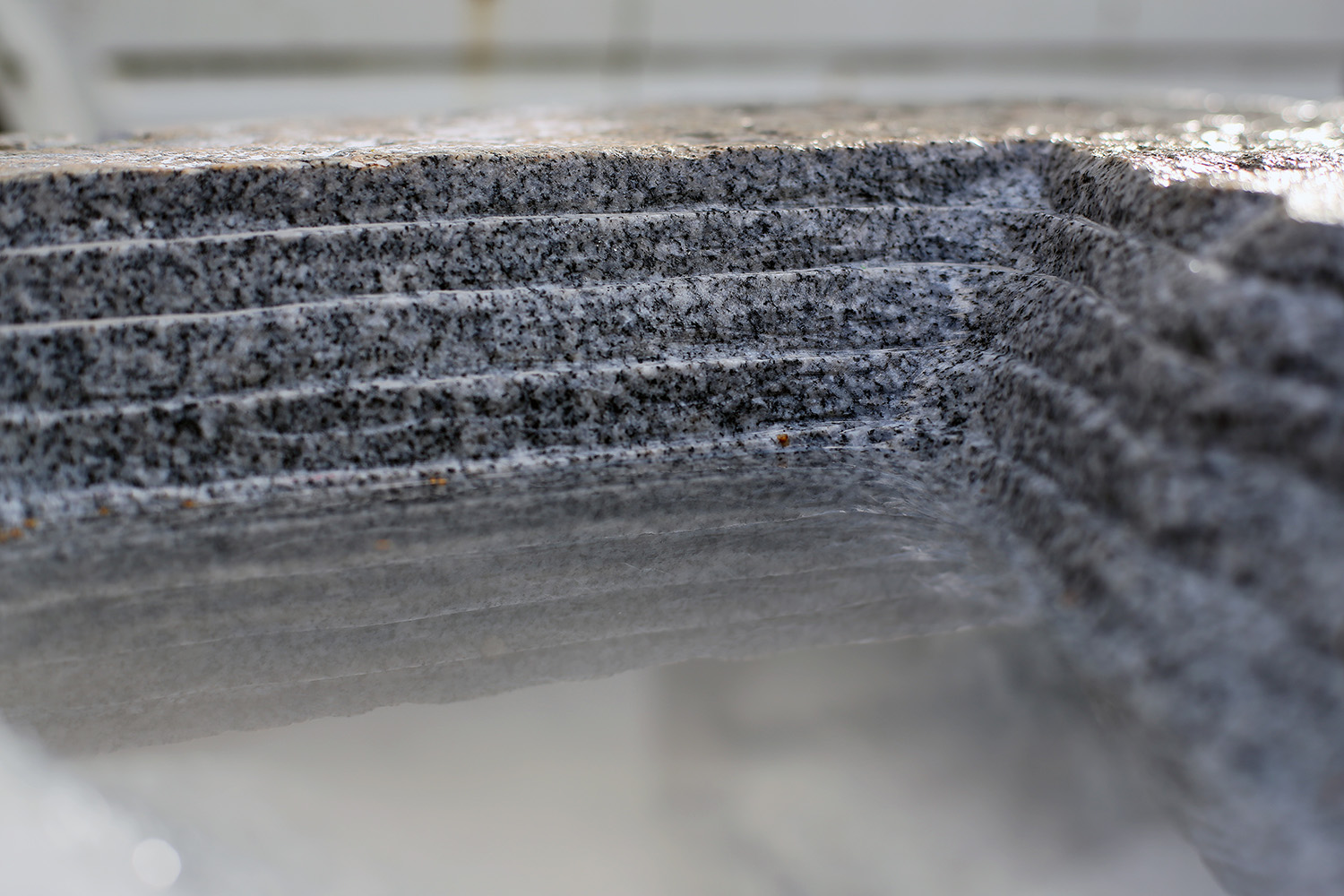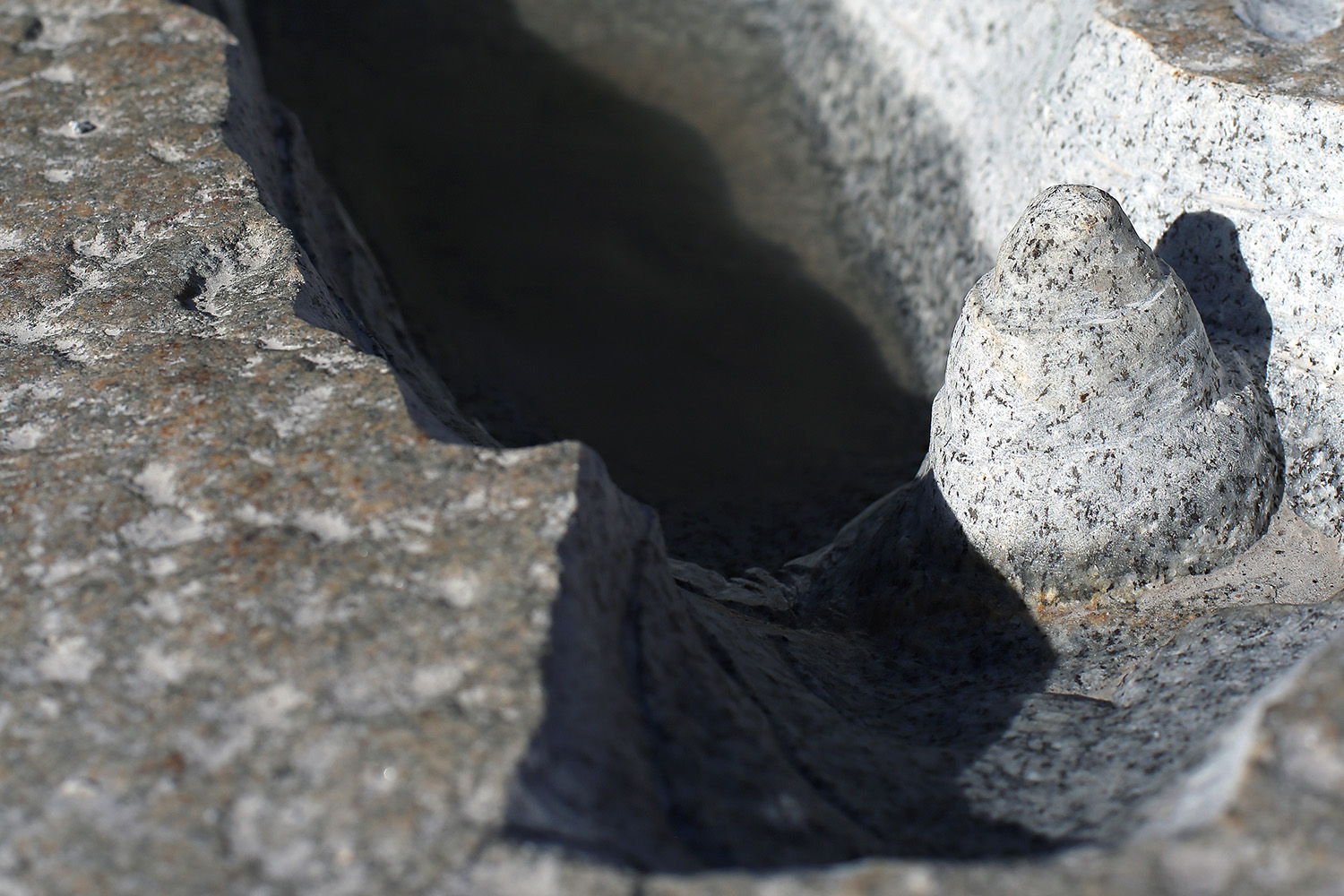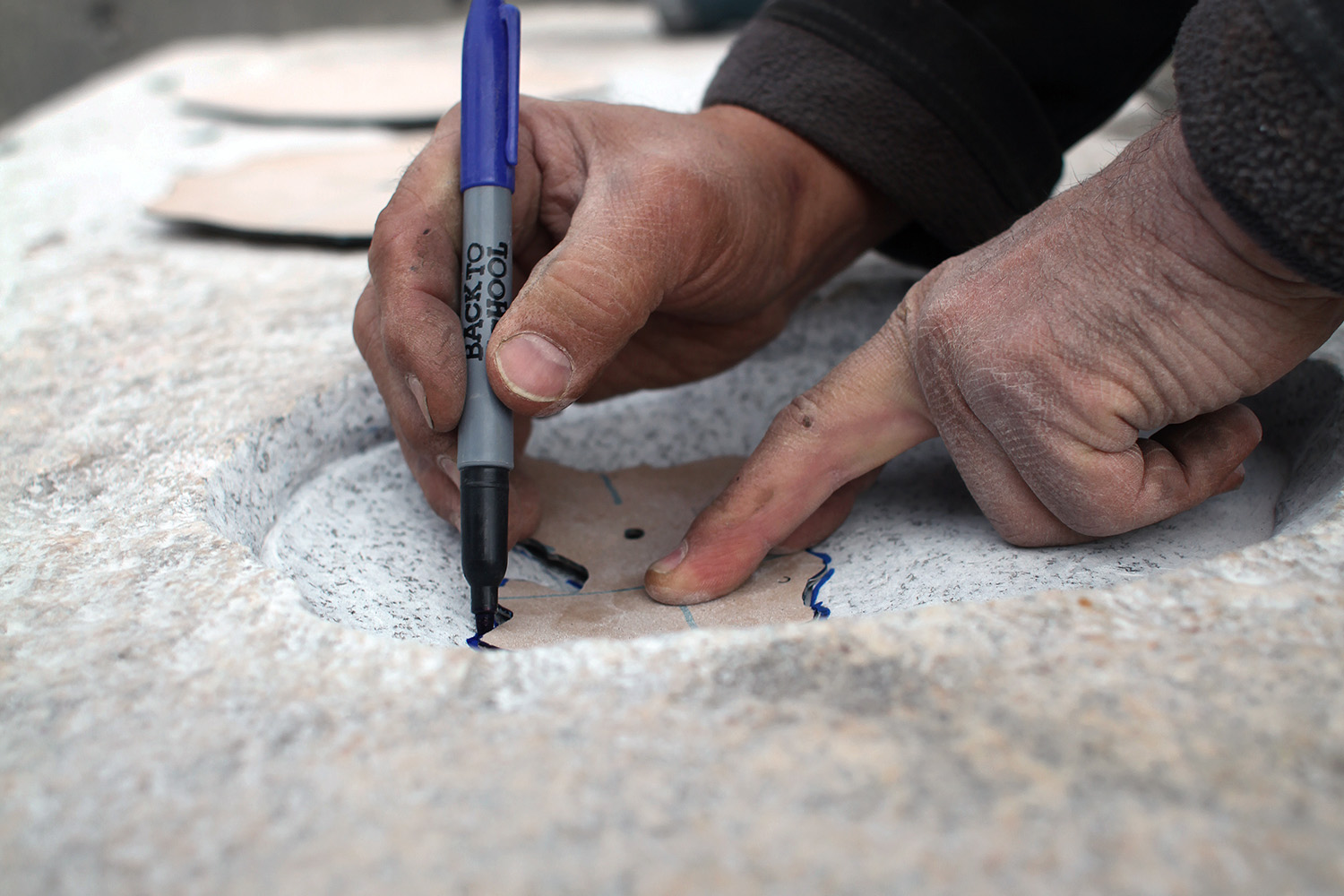-
MAP





Reservoir
Three linked artworks made for and with the Forth and Clyde Canal by Minty Donald, Neil McGuire and Nick Millar, 2014—
Read MoreSeven iron ingots commemorating a barge-pulling event in July 2015
Nine granite boulders, each with a miniature reservoir carved into its upper face
Lettering carved into opposite walls of the canal, marking past and present water levels
The RESERVOIR carvings make a connection between the canal, which is often seen as an inert stretch of water – a big ditch – and the wider network of waterways that feed it. Every day, one of Scottish Canals’ employees monitors rainfall and travels over 100 miles to visit the reservoirs and feeder channels across central Scotland that supply water to the Forth and Clyde Canal. At each, he adjusts sluice gates, clears blockages and regulates water flow to ensure that the canal’s water level is maintained.
Davie MacRoberts, Scottish Canals’ operatives’ supervisor, is pleased with the installation of the carved reservoirs, one of which is outside the workshop at Scottish Canals Head Office. ‘The reservoir carvings show employees what they are dealing with — what the reservoirs would look like when empty’.
The carvings were made by artist, David Wilson, and are based on Scottish Canals’ hydrological survey drawings of Birkenburn Loch, Black Loch, Lilly Loch, Townhead Reservoir and Hillend Reservoir. Four of the smaller reservoirs (Bishop Loch, Johnston Loch, Lochend Loch and Woodend Loch) are no longer connected to the network and so additional surveys of these much smaller and shallower lochs were commissioned from the University of Glasgow’s School of Geographical and Earth Sciences, and new drawings made.
The RESERVOIR boulders respond to changing atmospheric conditions: rainwater gathers in the carved basins and spills out through grooved outflows or evaporates. The surfaces of the miniature lochs and reservoirs are dimpled by rain showers, ruffled by wind and, occasionally, stilled by freezing temperatures.